Today’s Current Affairs: 18th May 2024 for UPSC IAS exams, State PSC exams, SSC CGL, State SSC, RRB, Railways, Banking Exam & IBPS, etc
Table of Contents
Venezuela Becomes First Country To Lose All Glaciers:
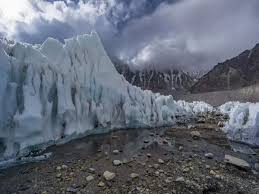
Venezuela is thought to be the first nation in modern times to have completely lost all of its glaciers.
- New research shows that the Humboldt glacier in the Andes, which used to be very big, has shrunk to less than 2 hectares, which means it is no longer a glacier but an ice field.
- The Sierra Nevada de Mérida mountain range in Venezuela used to have six glaciers.
- As of 2011, five of these glaciers had melted away, leaving only the Humboldt glacier. Professionals thought Humboldt would last for another ten years, but new tests show it has melted much more quickly than expected.
- It is located on the northern coast of South America with its capital located in Caracas.
- It is bounded by the Caribbean Seaand the Atlantic Ocean to the north, Guyana to the east, Brazil to the south, and Colombia to the southwest and west.
- A physiographically diverse country, Venezuela incorporates the northern Andean Mountain chains and interior highlands, the main portions of the Orinoco Riverbasin with its expansive Llanos (plains), Lake Maracaibo, which is the largest lake in South America and the spectacular Angel Falls, the world’s highest waterfall.
- Rio Negro (shared with Colombia and Brazil): 2,250 km.
- It is a major tributary of the Amazon River.
- Orinoco (shared with Colombia): 2,101 km. It is the third-longest river in South America, after the Parana and the Amazon.
UAE Launches 10-Year Blue Residency Visa For Environmentalists:

The Blue Residency card in 2023 was a big step for the United Arab Emirates to show its dedication to protecting the environment.
- Sheikh Mohammed bin Rashid, the Prime Minister and Ruler of Dubai, announced this new visa program that gives people who have made outstanding efforts to protect the environment the chance to live there for 10 years.
- The Blue Residency visa is for people who work in several environmental fields, such as protecting sea and land life, improving air quality, using sustainable technologies, and promoting the circular economy.
- The Federal Authority for Identity, Citizenship, Customs, and Port Security is where applications can be sent. Furthermore, the appropriate authorities can suggest exceptional people for this long-term residency status.
- In the UAE, standard residency visas used to last for two years before the Blue Residency visa came out.
- UAE started the Golden Visas program in 2019 to bring in investors, business owners, and other highly skilled workers. The program lasts for 10 years.
- The UAE started giving out Green Visas in 2022. These visas are good for five years and are meant for skilled workers, freelancers, and business owners.
- These changes show that the UAE is now focusing on getting and keeping talented people from around the world in a variety of fields.
- The main focus is on areas that help the economy become more diverse and last for a long time.
Red Colobus Monkeys:

A recent study suggests that Red Colobus Monkeys, a rare and endangered population of monkeys found in various regions of Africa are facing threats to their survival and are at risk of becoming extinct.
- These monkeys act as “indicator species,” meaning their presence and well-being reflect the overall health of the forest ecosystem.
- Colobines are primarily leaf-eaters.
- They also play a vital role in seed dispersal, contributing to the regeneration of diverse plant life.
- Their unique digestive system allows them to consume and disperse seeds, ensuring the continuation of various plant species.
- Across Africa, there are 17 red colobus species (18 if subspecies are counted), spanning from Senegal to the Zanzibar Archipelago.
- 14 of them are classified as Endangered or Critically Endangered on the IUCN Red List of Threatened Species.
Pine Needle Power Projects:
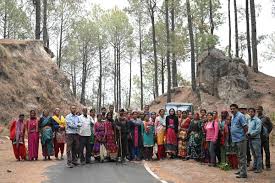
Uttarakhand’s innovative pine needle power projects, aimed at mitigating forest fires and generating electricity, have fallen short of expectations. Despite the vast potential, technological and practical challenges have hindered their success.
- In 2021, the Uttarakhand State government under bio-energy projects announced a scheme to establish power projects that would use pine needles as fuel to generate electricity.
- The original plan was to establish multiple units ranging from 10kW to 250 kW across the State in three phases (worth about 150 MW).
- Though the government expected 58 units to be set up, only six units of 250 kW (totally worth 750 kW) have been established.
- Agency Involved: Uttarakhand Renewable Energy Development Agency (UREDA).
- 16.36% of Uttarakhand’s forest area is covered by chir pine (Pinus roxburghii) forests. An estimated 15 lakh tonnes of pine needles are generated annually in the state.
- If 40% of this, coupled with agricultural residue, could be utilised, it could significantly aid the state’s power requirements and provide employment.
- Chir pine as an exotic Species prevents the regeneration of localised species.
- Using pine needles as fuel is more efficient and less polluting than using them as firewood or letting them burn away.
Regional Economic Outlook For Asia And Pacific Report April 2024 : IMF Report
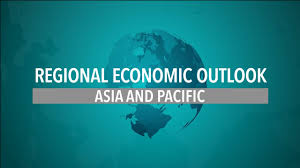
The International Monetary Fund (IMF) has released its Regional Economic Outlook for Asia And Pacific Report April 2024, which stated that India was the source of repeated positive growth surprises, supported by resilient domestic demand. Also, Public Investment is a significant factor in driving India’s economy.
Highlights of the Report:
- Asia-Pacific’s growth in late 2023 surpassed expectations at 5.0%, with varying inflation rates across economies.
- Projections for 2024 suggest a slight growth slowdown to 4.5%, balancing near-term risks.
- In emerging markets, growth was supported primarily by strong private demand.
- It raised India’s growth forecast for the financial year 2024-25 to 6.8% from 6.5% earlier and retained the growth forecast for 2025-26 at 6.5%.
- It stated that India and the Philippines have been the source of repeated positive growth surprises, supported by resilient domestic demand.
- In China and, especially, India, public investment made an important contribution.
Amplifying The Global Value Of Earth Observation : Report
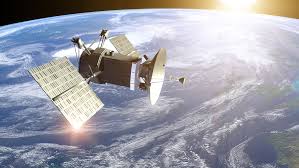
A new report titled “Amplifying the Global Value of Earth Observation” by the World Economic Forum has shed light on the immense potential of Earth Observation (EO) data to drive economic growth and sustainability worldwide.
Highlights of the Report:
- Economic Impact of EO Data could generate over USD 3 trillion in economic benefits globally by 2030.
- The global value of EO data is expected to grow from USD 266 billion currently to over USD 700 billion by 2030.
- This could contribute a cumulative USD 3.8 trillion to the global Gross Domestic Product (GDP) by 2030.
- EO data can help eliminate 2 gigatonnes of greenhouse gas emissions annually by 2030.
- This is equivalent to the estimated combined annual emissions of 476 million gasoline-powered cars.
- EO can monitor climate variables, emissions, ecosystems, and biodiversity to inform actions to mitigate climate change and protect natural habitats.
- The Asia Pacific region is poised to capture the largest share of EO’s value by 2030, reaching a potential value of USD 315 billion.
- Africa and South America are positioned to realise the largest percentage growth in EO data value.
- EO Blended with Enabling Technologies: Enabling technologies like artificial intelligence (AI) and digital twins can catalyse the adoption of EO data.
- A digital twin is a virtual representation of an object or system that accurately reflects a physical object.
- It covers the object’s entire lifecycle, is updated with real-time data, and utilises simulation, machine learning, and reasoning to aid in decision-making.
WEF:
- The World Economic Forum is an international organisation based in Geneva, Switzerland, founded by Klaus Schwab in 1971.
Synchrotron : Circular Particle Accelerator
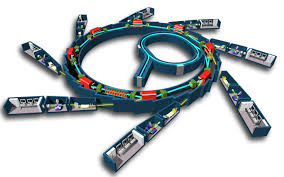
China’s latest scientific milestone, the High Energy Photon Source (HEPS), set to be the first fourth-generation synchrotron light source in Asia, will begin operations by the end of this year.
- A synchrotron is a type of circular particle accelerator, where particles move in a loop.
- It works by accelerating charged particles (electrons) through sequences of magnets until they reach almost the speed of light.
- These fast-moving electrons produce very bright light, called synchrotron light.
- This very intense light, predominantly in the X-ray region, is millions of times brighter than light produced from conventional sources and 10 billion times brighter than the sun.
- The light is channelled down beamlines to experimental workstations, where it is used for research.
- Scientists can use this light to study minute matter such as atoms and molecules.
- They can examine how a sample scatters, diffracts, absorbs, or reemits the synchrotron light, which reveals various different details of structure or chemical composition.
- There are approximately 70 synchrotrons around the world in various stages of development.
- There are technical differences between the use and capabilities of synchrotrons, with some being used for appliances and others for fundamental/theoretical research.
Ambaji White Marble : GI Tag

Marble mined in Gujarat’s Ambaji has recently been awarded the Geographical Indication, or GI tag, by the Central Government.
- Ambaji White Marble is a type of marble known for its stunning white appearance and unique natural patterns.
- It is named after the town of Ambaji in the state of Gujarat, where it is predominantly quarried.
- It is also known as Amba White Marble and Ambe White Marble.
- It is characterized by its pristine white colour, which often features subtle grey or beige veining.
- The veins can vary in intensity, ranging from fine and delicate to bold and pronounced, giving each slab a distinct and individualistic appearance.
- These variations occur naturally due to the presence of minerals and impurities during the marble formation process.
- It has very long-lasting shine and durability.
- The smooth and polished surface of the marble adds to its appeal and sophistication.
- It is widely used for luxury architectural projects, sculptures, and monuments.
Digital Arrest : Report

Following increasing reports of “digital arrests” by cybercriminals the central government has collaborated with Microsoft to block more than 1,000 Skype IDs used for online intimidation, blackmail, and extortion.
- Digital Arrest is a new and innovative tactic employed by cybercriminals to defraud gullible victims and extort money.
- The modus operandi in this cybercrime method is that fraudsters pose as law enforcement officials such as police, Enforcement Directorate, CBI, among others and manipulate them into believing that they have committed some serious crime.
- In certain cases, the victims are “digitally arrested” and forced to stay visible over Skype or other video conferencing platforms to the criminals until their demands are met.
- The cyber fraudsters deceive the victim into believing that he or she has been put under ‘digital arrest’ and will be prosecuted if they do not pay the scamsters a huge amount of money.
- The cyber criminals often force the naive victims to self-arrest or self-quarantine themselves, by tricking them into believing that they have been put under ‘digital arrest’ and cannot leave their house unless they pay up.
PREFIRE Polar Mission : NASA
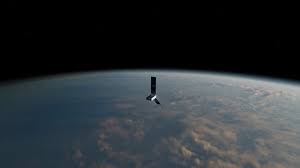
A NASA PREFIRE polar mission is set to be launched from New Zealand on May 22.
- The Polar Radiant Energy in the Far-InfraRed Experiment (PREFIRE) polar mission consists of twin satellites, each carrying one instrument and measuring the poles about six hours apart.
- The objective of the mission is to reveal the full spectrum of heat loss from Earth’s polar regions for the first time, making climate models more accurate.
- The data from PREFIRE mission is aimed at addressing the gap in knowledge and provide data to improve predictions of climate change and sea level rise.
- Provide new information on how Earth’s atmosphere and how ice influences the amount of heat being radiated out to space from the Arctic and Antarctic.
- The mission with cube satellites about the size of a shoebox will be launched aboard an Electron launch vehicle.
- It is equipped with technology proven on Mars and will measure a “little-studied portion” of the radiant energy emitted by Earth.
- Two satellites carrying a thermal infrared spectrometer will be in asynchronous near-polar orbits and will be passing over a given spot on Earth at different times. To maximize coverage, they will be overlapping every few hours near the poles.
- The instruments weighing less than 6 pounds (3 kilograms) each will make readings using a device called a thermocouple, similar to the sensors found in many household thermostats
Swachhata Pakhwada:
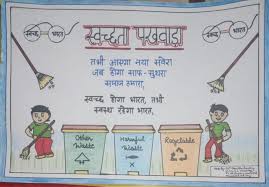
The Ministry of Development of North Eastern Region (MDoNER) has taken a significant step towards promoting cleanliness and environmental sustainability with the launch of Swachhata Pakhwada and it will run from 16th May to 31st May 2024.
- Swachhata Pakhwada is an initiative launched in April, 2016 under the Swachh Bharat Mission.
- It was launched with the objective of bringing a fortnight of intense focus on the issues and practices of Swachhata by engaging the central government ministries/departments.
- It aims to include all ministries and departments through a common programme to contribute for Swachh Bharat Mission.
- An annual calendar is pre-circulated among the ministries to help them plan for the Pakhwada activities.
- The ministries observing Swachhata Pakhwada are monitored closely using the online monitoring system of Swachhata Samiksha where action plans, images, videos related to Swachhata activities are uploaded and shared.
- For the Pakhwada fortnight, observing ministries are considered as ‘Swachhata Ministries’ and are expected to bring qualitative swachhata improvements in their jurisdictions.
Swachh Bharat Mission:
- The Indian government launched the swachh bharat mission on October 2, 2014.
- The mission covered all rural and urban areas.
- The urban component of the mission is implemented by the Ministry of Urban Development, and the rural component by the Ministry of Drinking Water and Sanitation.




